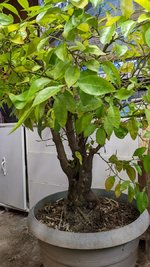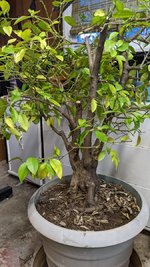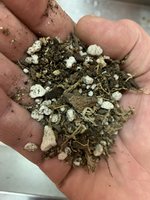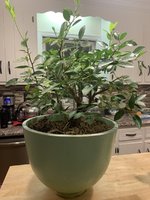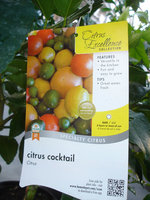I inherited a key lime from a good friend several years ago and have been kinda pruning it towards a bonsai over the years. Here’s my practice and findings with citrus.
After last frost put it in full sun, the sunniest location the better, they devour light and this will give it strength to get through any indoor winter.
Like ficus, it will (can) drop every single leaf bringing in or outside. This stresses the plant. The solution I found for this that has worked every time is when I first put it outside, I put it right against the house for five or so days. Then, place a bit farther (the edge of my deck.. ~12’) for another several days. Then, put in sunniest place available -no more leaf drop. Do the dance in reverse in winter and put in bright location. Of course you don’t have to do this tho it is easy enough for me if I can remember…winter sneaks up on ya.
I bring it in and put it out when the lows are consistently above 40. It can handle much lower than this, even light frost if healthy; but, why poke the bear..?
I’ve found the best time to repot is summer; although, late spring once you’re getting high temperatures and growth is good. If you can really keep watering in check and wait till then, this would be my approach.
They prefer to dry out some rather than stay wet. If I have to ask myself if I should water it, I don’t. When I do, I drench it.
I know they can grow great in a basic nursery soil if watered correctly. I can bare root mine in summer when it’s growing well and it never misses a beat. I put into good potting soil ( not miraculous grow) and add course perlite (~1/3 parts.
View attachment 415883
Once healthy and growing vigorously, I’ve cut mine VERY hard in summer and it don’t miss a beat.
Thorn tips can be cut back to blunt -I used to have little ones doing back flips around the house, don’t mess with anymore.
Here’s my adopted tree. It’s about 2” at the base and about 18” tall, I chopped 4’ off of it the first summer I had it..
View attachment 415885View attachment 415888

